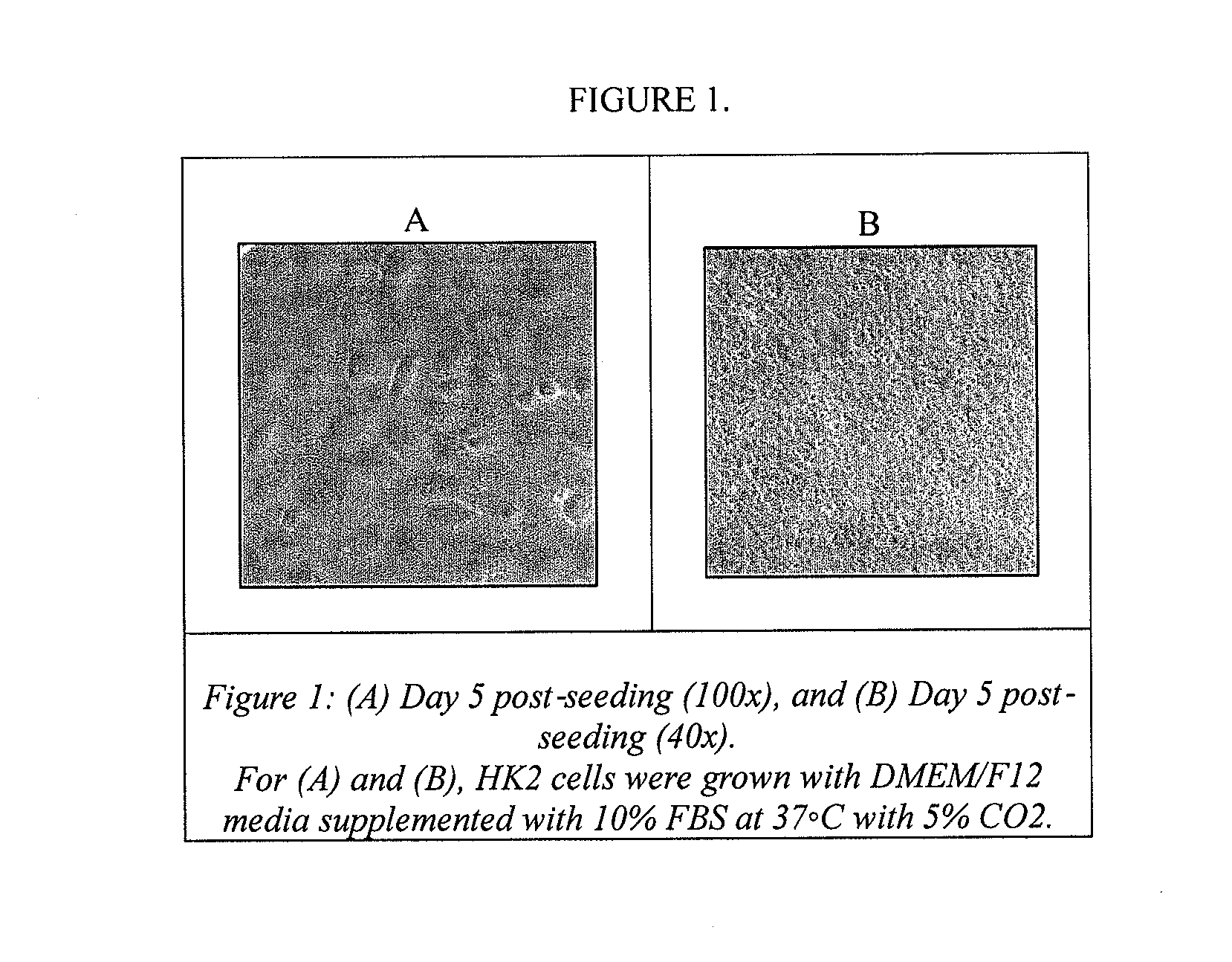Method of screening pharmaceuticals for drug interactions and nephrotoxicity
a drug interaction and nephrotoxicity technology, applied in the field of screening pharmaceuticals for drug interactions and nephrotoxicity, can solve the problems of nephrotoxicity and alterations in the systemic drug concentration of one or more interacting drugs, oliguric renal failure, and excessive accumulation of drugs in the body, and achieves the effects of reducing the risk of nephrotoxicity and nephrotoxicity
- Summary
- Abstract
- Description
- Claims
- Application Information
AI Technical Summary
Benefits of technology
Problems solved by technology
Method used
Image
Examples
example 1
Synthesis of Acetyl-PAH for Assay Quantification
[0064]Acetyl-PAH (FIG. 2) was synthesized by combining 1.9 mL of acetic anhydride with 20 mL of a 1% PAH solution, and allowed to stand at room temperature for 30 minutes with occasional shaking. The mixture was cooled in an ice bath, filtered by suction through a Buchner funnel and washed several times with ice-cold deionized, distilled water followed by 95% ethanol. The precipitate was dried on filter paper. The purity was confirmed by LC-MS.
example 2
HPLC Quantification of Acetyl-PAH
[0065]Acetyl-PAH was quantified by HPLC using a Waters 2690 Separation Module. Analyte separation was achieved with a C18 125A 10μ 300 mm column (Grace Discovery, Deerfield, Ill.) with an acetonitrile-based mobile phase and UV detection at 254 nm. The runtime was 25 minutes for all samples. The HPLC results showed that mean (±SD) naPAH metabolite concentration increased over time (FIG. 2) The negative control showed absence of acetyl-PAH (FIG. 3).
example 3
Cell Culture
[0066]HK2 cells were grown in 15 ml of Dulbecco's Modified Eagle Medium (DMEM) / F12 media with 10% Fetal Bovine Serum (FBS) and incubated at 37° C. with 5% CO2. After 5 days of culture, each 75 cm2 flask of cells was transferred to 2 mls of the culture media and incubated with 200 μg / ml of PAH except for the negative control where no PAH was added. Cells were incubated for 4, 8 and 18 hours each (in triplicate) with or without PAH (control). Cells post incubation were lysed via sonication for 1 minute, then centrifuged at 14,000 RPM for 10 minutes. The supernatant was extracted and acetyl-PAH was quantified by HPLC. After 5 days of culture, the HK2 cell monolayers reached confluence (FIG. 1).
Steps for Thawing Cells:
[0067]1. Warm DMEM / F12 media and DFBS in 37° C. water bath for 30 minutes[0068]2. Turn on UV lamp in cell culture hood for 30 minutes[0069]3. Spray down hood and media, DFBS and trypsin bottles with 70% ethanol and wipe clean[0070]4. Add warmed 50 ml of FBS, 5 ...
PUM
| Property | Measurement | Unit |
|---|---|---|
| time | aaaaa | aaaaa |
| temperature | aaaaa | aaaaa |
| concentration | aaaaa | aaaaa |
Abstract
Description
Claims
Application Information
 Login to View More
Login to View More - R&D
- Intellectual Property
- Life Sciences
- Materials
- Tech Scout
- Unparalleled Data Quality
- Higher Quality Content
- 60% Fewer Hallucinations
Browse by: Latest US Patents, China's latest patents, Technical Efficacy Thesaurus, Application Domain, Technology Topic, Popular Technical Reports.
© 2025 PatSnap. All rights reserved.Legal|Privacy policy|Modern Slavery Act Transparency Statement|Sitemap|About US| Contact US: help@patsnap.com



